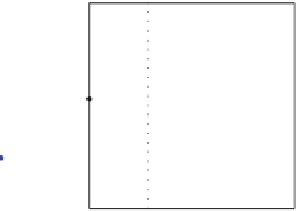Geoscience Reference
In-Depth Information
1.608
ˆ
(
)
1.6
0.998
(h
)
1
3
1.4
0.9
1.2
0.8
ˆ
1.100
(
Δ
I
)
1
0.748
(
Δ
I
)
33
0.7
Equatorial Scaling Factors
Axial Scaling Factors
Fig. 4
Contributions of rotational deformation (including pole tide), relative angular momentum
of the core, anelasticity and surface loading to the equatorial scaling factors (
left panel
, with respect
to
(
C
−
A
)Ω
χ
Ω
C
m
in the denominator of
) and axial scaling factors (
right panel
, with respect to
in the denominator of
χ
3
)
Introducing the numerical values specified in Table 1 of Gross (
2007
) for all geodetic
parameters, rewriting the denominator of the angular momentum functions in terms
of the traditionally used quantity
A
)Ω
(
−
and neglecting the small imaginary
parts results in the final prefactors of matter and motion terms published by Gross
(
2007
)
C
ΩΔ
I
608
h
1
.
100
+
1
.
χ
=
(35)
A
)Ω
(
C
−
0
.
748
ΩΔ
I
33
+
0
.
998
h
3
χ
3
=
.
(36)
Ω
C
m
Figure
4
illustrates the contributions of the various correction terms to the final
equatorial and axial scaling coefficients. The displayed values have been inferred
from setting the denominators in Eqs. (
27
)-(
28
) and Eqs. (
35
)-(
36
) in relation to the
rigid Earth expressions, which are
A
)Ω
(
C
−
for the equatorial component and
Ω
C
for the axial direction, see Eqs. (
20
) and (
21
). Seemingly, sur-
face loading acts to reduce the effects of rotational deformation, the equilibrium pole
tide and relative angular momentum of the core. The impact of anelasticity on
k
2
and
core momentum are combined in Fig.
4
since their distinction is blurred in Eq. (
35
).
In Eqs. (
30
)-(
31
) and (
35
)-(
36
) we have now a mathematical tool to study rela-
tively small geophysical excitation of polar motion variations and changes in rotation
rate of a partially elastic, dynamically axisymmetric Earth equipped with a fluid, axi-
ally decoupled core and equilibrium oceans. The latter two components have been
incorporated into the formulation by drawing on geophysical hypotheses valid only
for frequencies
C
m
=
0
.
8864
Ω
|
σ
|
Ω
. As a result, the proposed scheme for excitation studies



















































